Journalism in Action: Beverly Deepe Keever and Her Career
Archives & Special Collections, University of Nebraska-LincolnSouth Vietnam and Allied Armed Forces
This page provides links to Keever’s articles and photos about South Vietnamese troops and their allies. Keever did not cover all combatants equally and left Vietnam in 1968 before significant Cambodian and Laotian involvement, so not every combatant is listed here.
Army of the Republic of Vietnam (ARVN)
The Army of the Republic of Vietnam (ARVN) was South Vietnam’s Armed Forces. ARVN began in 1955 with 150,000 troops and by 1975 included over one million troops. While the Americans supplied and trained ARVN troops, they were often plagued by corrupt officers, low morale, desertion, and poor military leadership. ARVN troops were often used to defend Vietnamese cities and fought alongside the U.S. Army in the field. After the U.S. left the War in 1973, the defense of South Vietnam was left entirely to ARVN.
Read the articles here.
See the photos here.

ARVN Soldiers in the field, approximately 1962-1963
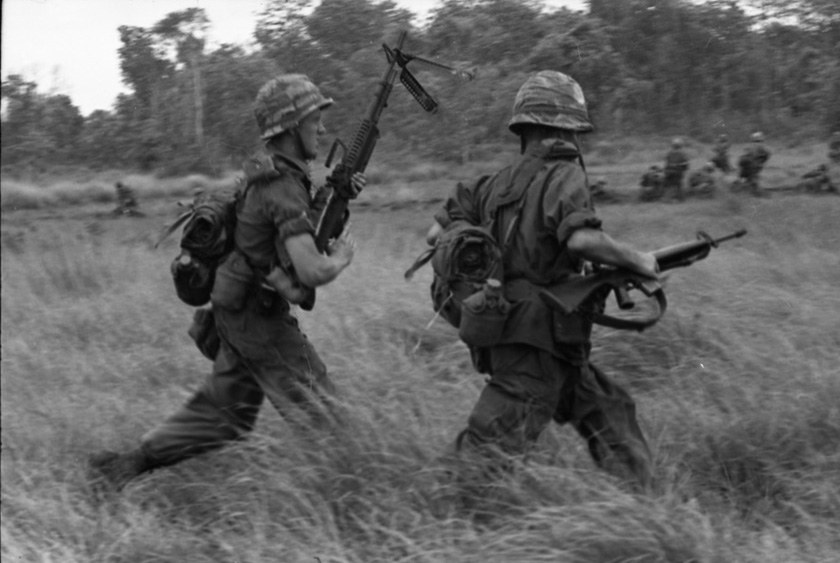
US Army soldiers during Operation Mastiff, 1966
US Army
Of all the US military branches, the U.S. Army had the closest working relationship with ARVN. In fact, the Army helped to found ARVN in the 1950s and acted as advisors early in the war. The number of soldiers in Vietnam exploded in 1965 when the U.S. officially entered the war. The Army largely focused on combat on the ground against the Viet Cong in search-and-destroy missions. Army forces began to leave Vietnam after the Tet Offensive as the focus shifted toward air strikes.
Read the articles here.
See the photos here.
US Navy
The U.S. Navy filled a variety of roles during the Vietnam War. Their aircraft carriers were the base for many of the planes bombing North Vietnam in Operation Rolling Thunder. Their artillery was sometimes used for the bombardment of coastal bases. The Navy blockaded the South China Sea and the rivers of the Mekong Delta to cut off North Vietnamese supply lines. The Navy Seabees built military bases, roads, bridges, watchtowers, and other infrastructure across Vietnam. The U.S. Navy was also responsible for supplying all American troops in Vietnam.
Read the articles here.
See the photos here.
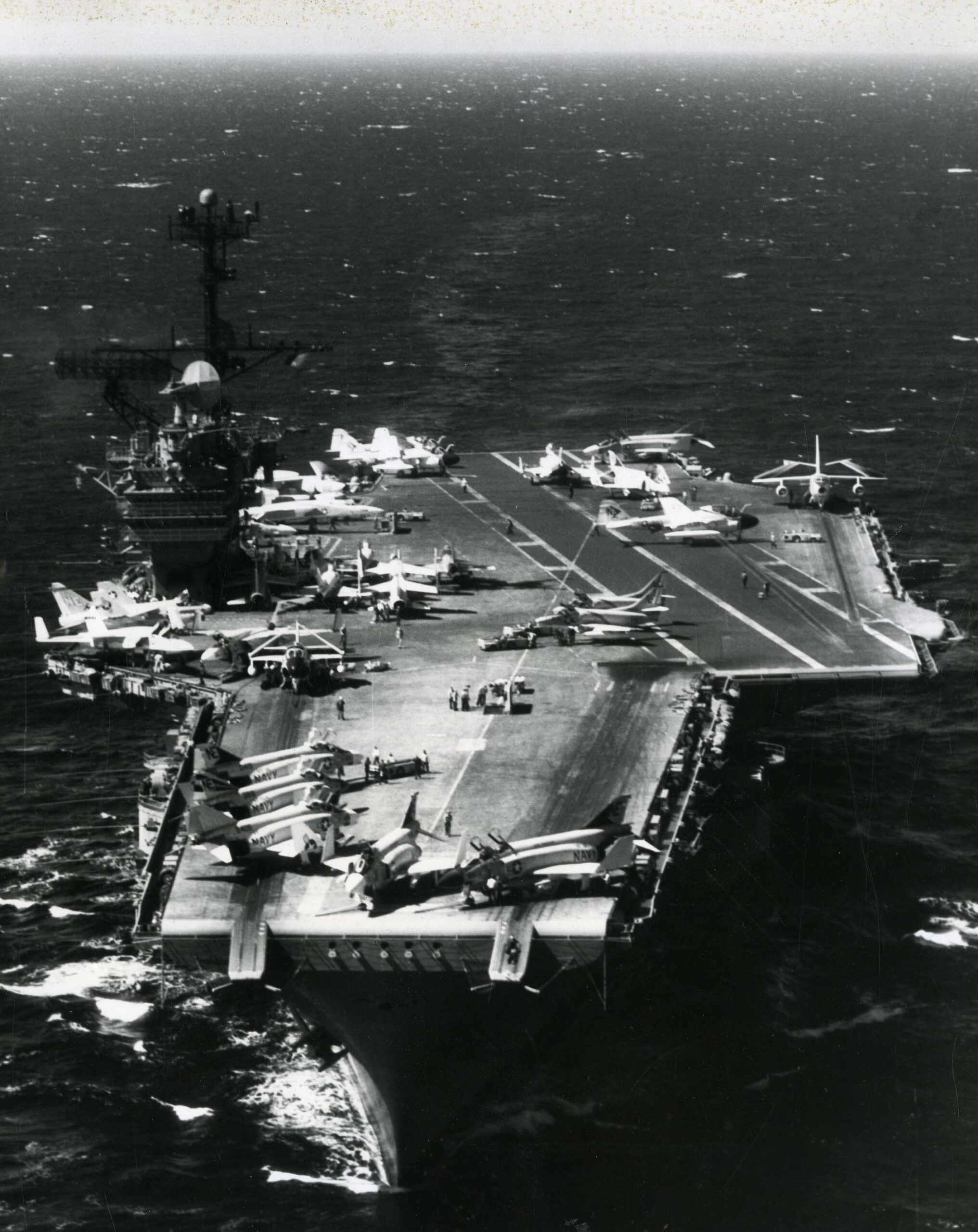
USS Ranger flight deck, 1968
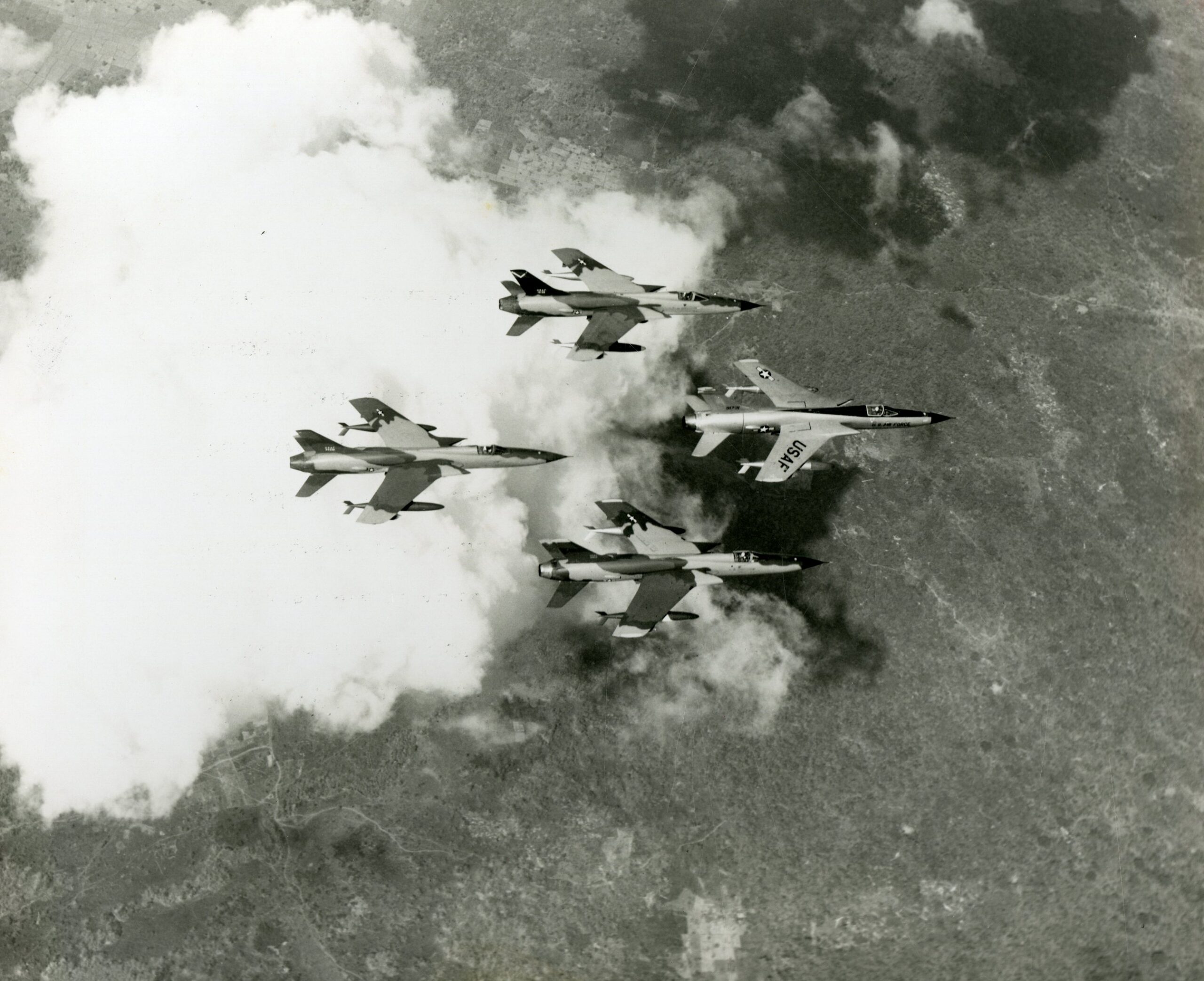
F-105 Thunderchiefs, 1967
US Air Force
While the Air Force had a small roll as advisors early in the war, they largely stayed out of the Vietnam War until 1965, when the U.S. officially entered the war. In 1965, they started Operation Rolling Thunder, bombing North Vietnamese industrial and supply sites. In response, the North Vietnamese quickly set up anti-aircraft systems across the North. The Air Force was also heavily involved in re-supply missions, medical evacuations, bombardment, and rescue missions.
Read the articles here.
See the photos here.
US Marine Corps
The U.S. Marine Corps entered the Vietnam War in the 1950s as advisers to South Vietnam. In the early 1960s, they were tasked with defending Da Nang airbase. In 1965, with the U.S. officially entering the war, the number of Marines around Da Nang expanded to about 70,000 in 1966. In the mid-1960s, the Marines tried to interrupt supply lines near the DMZ and locate Viet Cong soldiers in the South. During the Tet Offensive in 1968, Marines fought in the battles of Huế and Khe Sanh. All of these operations were heavily covered by Keever.
Read the articles here.
See the photos here.
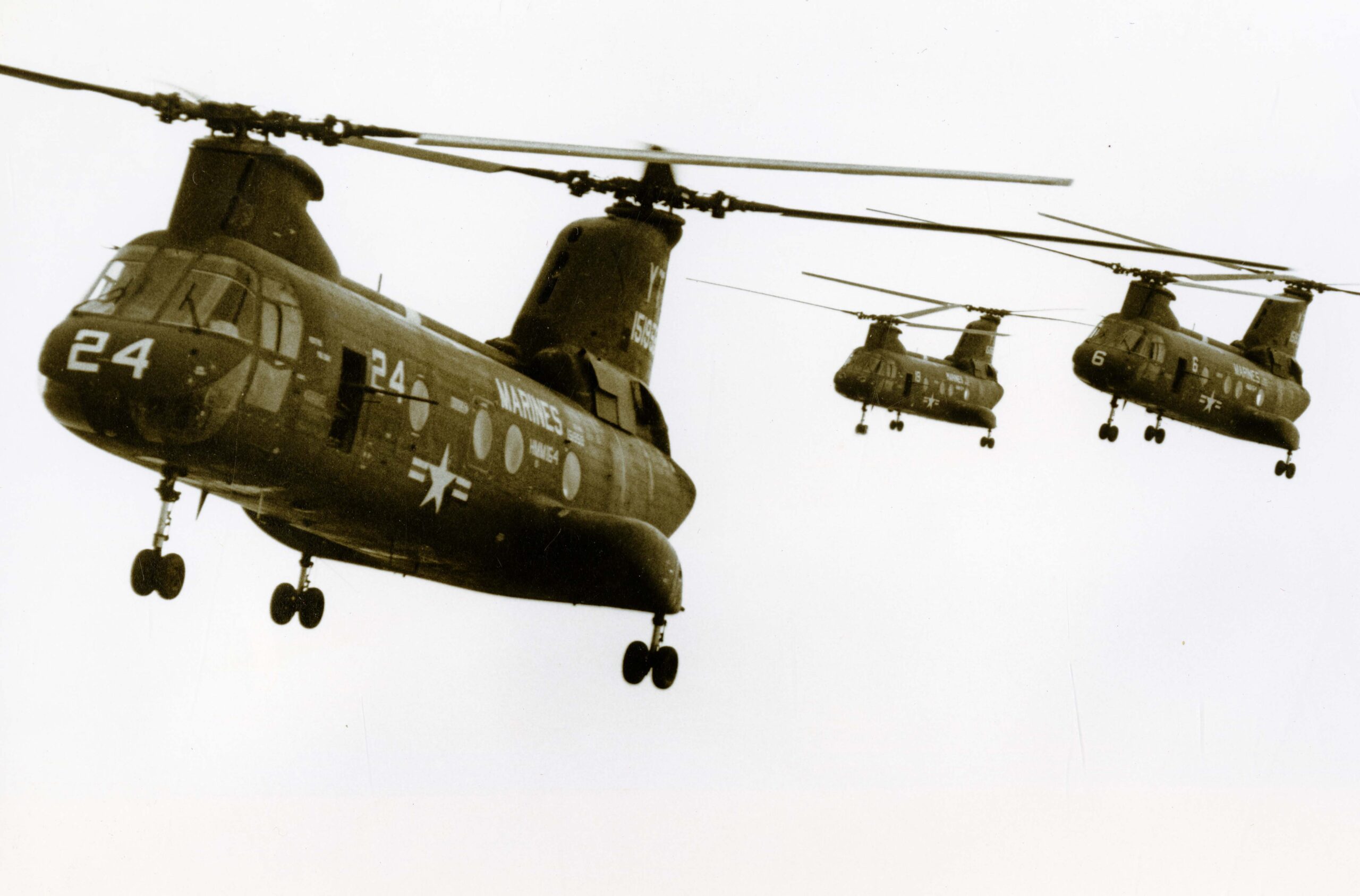
CH64 Sea Knight helicopter, 1967

Korean soldiers sparring, 1966
Republic of Korea (ROK) Armed Forces
Since the end of the Korean War, the Republic of Korea (ROK) was an American ally. When the U.S. entered the Vietnam War in 1965, ROK also sent personnel. ROK forces were largely made up of non-combat troops, which were called Dove Force. The Dove Force built civilian infrastructure like schools and roads, provided medical facilities, and brought economic advisors. The ROK did support the U.S. military in several operations and were known to be extremely effective.
Read the articles here.
See the photos here.
Australian Army
Because of their experience with jungle warfare in Malaysia, Australia entered the Vietnam War as advisors in 1962. Australia feared that if Southeast Asia fell under communist influence they would have hostile neighbors to the North. In 1965, they entered the war as combatants, eventually numbering 8,000 troops in 1968. Australia and the U.S. had very different approaches to the War, so by 1966 they agreed to fight separate parallel wars. Australian troops were focused in Phước Tuy Province. While the U.S. focused on utterly destroying the jungle with their firepower, Australia was more focused on ambush and counter-ambush, searching villages without destroying them, and patrolling. Starting in 1970, as troops completed their tours of duty, they were not replaced, and Australia started gradually withdrawing.
See the photos here.
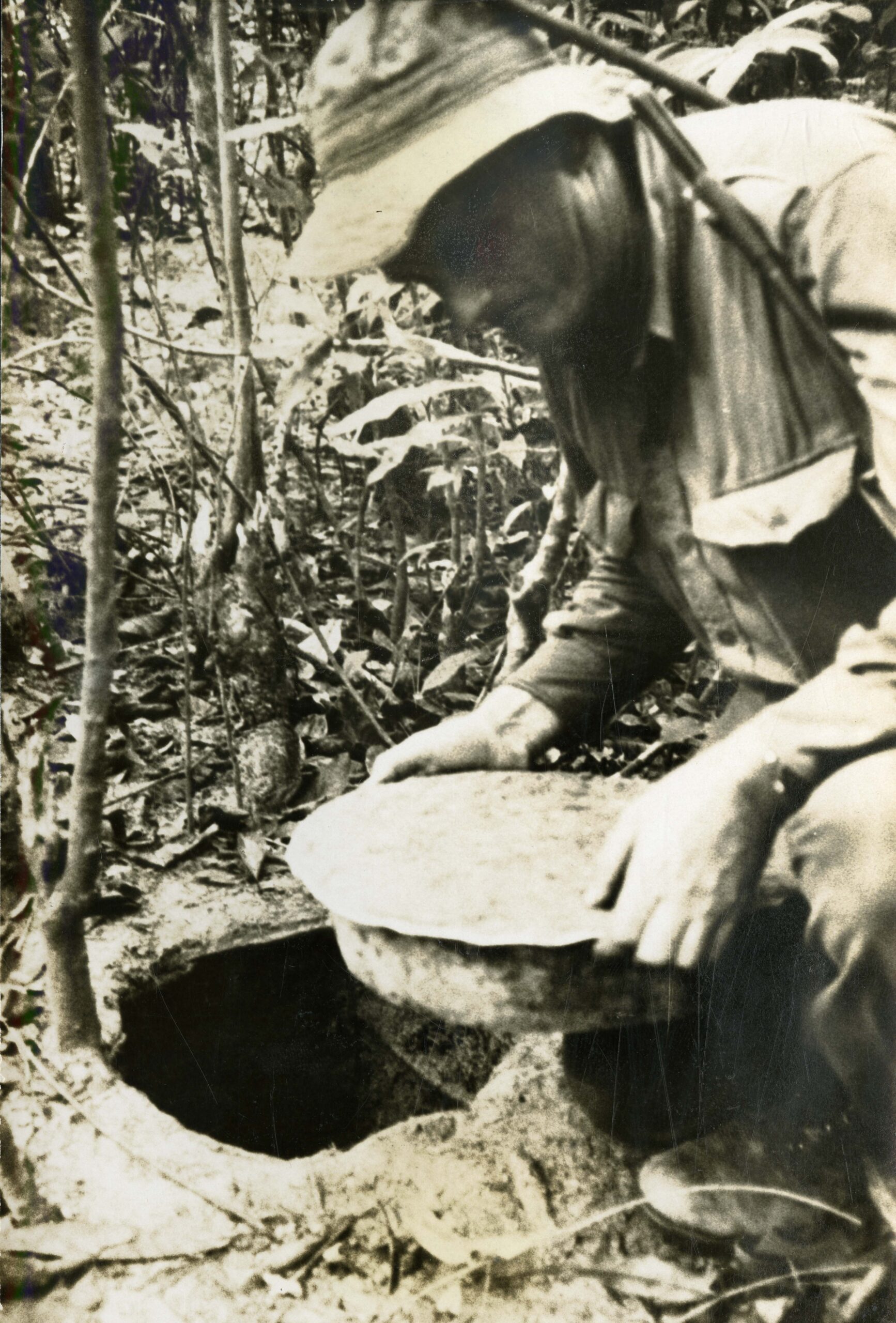
Royal Australian platoon sergeant removes Viet Cong tunnel cover, undated
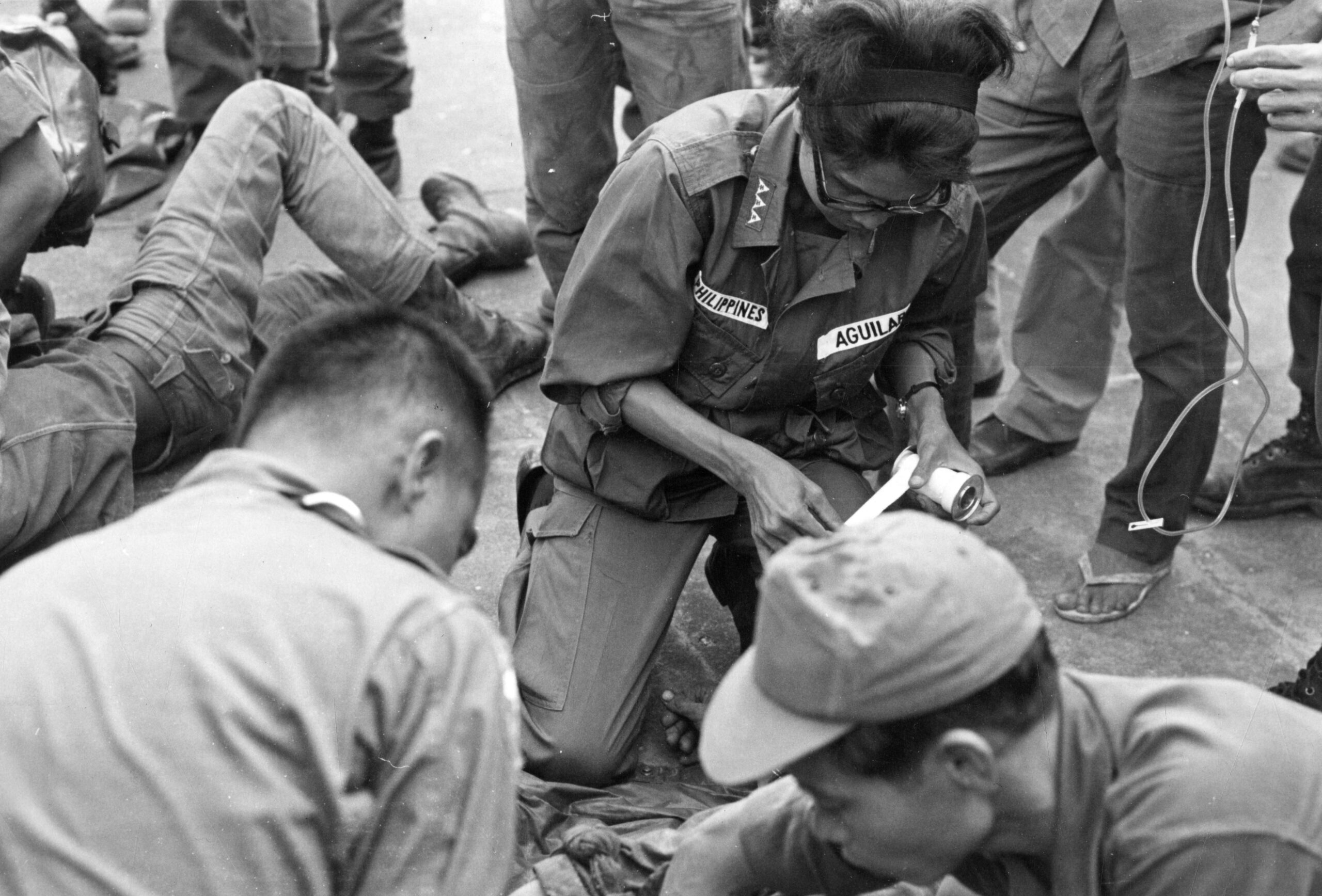
Philippine medical team treating wounded, 1965
Philippines Civil Action Group (PHILCAG)
The Philippines was generally reluctant to enter the Vietnam War as a combatant. Instead, they sent medical personnel starting in 1964, focusing on refugees. In 1966, the 75 Filipino medical personnel were joined by Philippines Civil Action Group (PHILCAG), who focused on building roads and providing humanitarian aid, as well as occasional defensive operations.
See the photos here.
